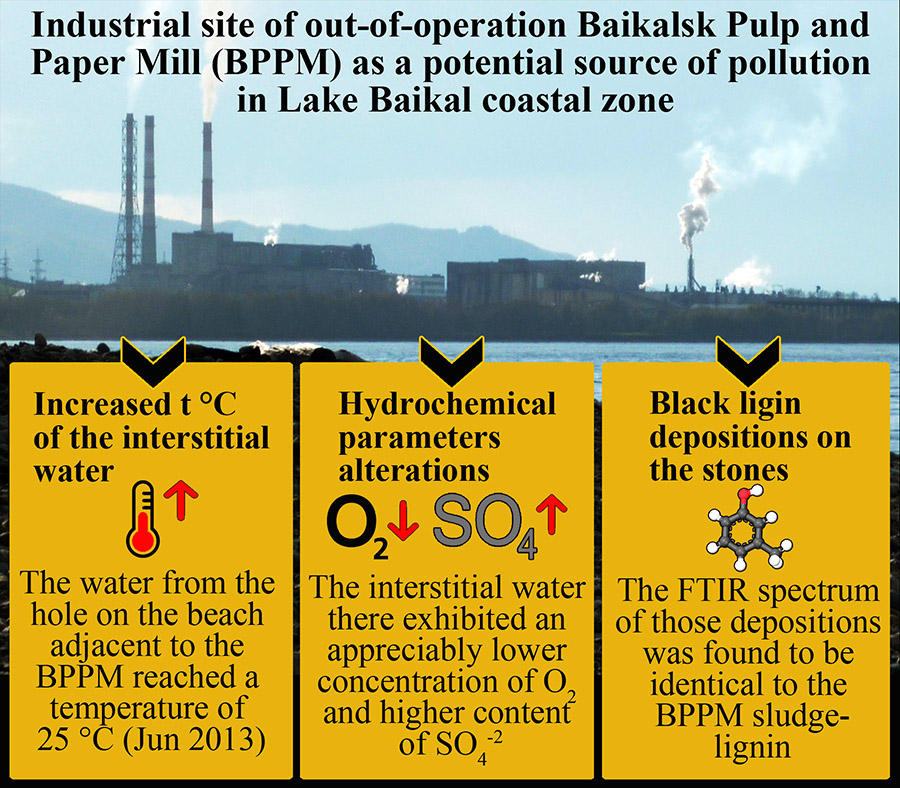Industrial site of out-of-operation Baikalsk Pulp and Paper Mill as a potential source of pollution in Lake Baikal coastal zone
DOI:
https://doi.org/10.31951/2658-3518-2022-A-5-1630Keywords:
Baikalsk Pulp and Paper Mill, interstitial, Lake Baikal, pollution, sludge-ligninAbstract
The Baikalsk Pulp and Paper Mill (BPPM) was functioning on the shore of Lake Baikal for almost 50 years. These years of operation inevitably imposed specific adverse effects on the lake ecosystem. Finally, the BPPM was closed in 2013 but with no measures to mothball the plant. During 2013–2016, we observed a few atypical phenomena through our complex investigations of the coastal zone area next to the BPPM. Water temperature measurements, hydrochemical analysis, and FTIR spectroscopy showed these phenomena as unusual for Lake Baikal’s pristine coastal areas. (1) We noted an anomalously high temperature of the interstitial water of the beach next to the BPPM. The water from the hole on the beach reached a temperature of 25 °C in June 2013. (2) The hydrochemical parameters of the water from the beach were analyzed, and the interstitial water there exhibited an appreciably lower concentration of oxygen and higher content of sulfur, sodium, and chlorine comparing the lake’s water. (3) We discovered the specific black depositions to cover the stones of the target beach. The IR spectrum of those depositions was found to be identical to the BPPM sludge-lignin. All these observations and results of chemical analyses point out that the industrial site of the nonfunctioning plant is still a substantial source of pollution, which negatively influences the Southern Baikal coastal zone ecosystem.

Downloads
Published
Issue
Section
License

This work is distributed under the Creative Commons Attribution-NonCommercial 4.0 International License.







